Shredded Leaves are Garden Gold

Raking leaves may not be your favorite thing to do on a beautiful fall day. But rather than thinking of it as a chore, think of it as harvesting! For gardeners, shredded leaves are the season’s most abundant – and most valuable crop.
Autumn leaves are a rich source of organic matter and valuable trace minerals that trees mine from deep in the soil. When mixed into the soil in your garden, they feed earthworms and other beneficial organisms. They also aerate heavy soils and help sandy soils retain moisture. Leaves can be used to make an attractive, weed-suppressing mulch for your flower garden, and they’re an effective way to insulate tender plants from extreme cold.
The Value of Shredding
When you chop leaves into small pieces, it creates more surface area. This makes it easier for microbes do their work converting leaves into humus and available plant nutrients. Shredding leaves also keeps them from packing together into tight, water-shedding clumps. And, it makes them easier to handle, because you can store them in less than half the space.
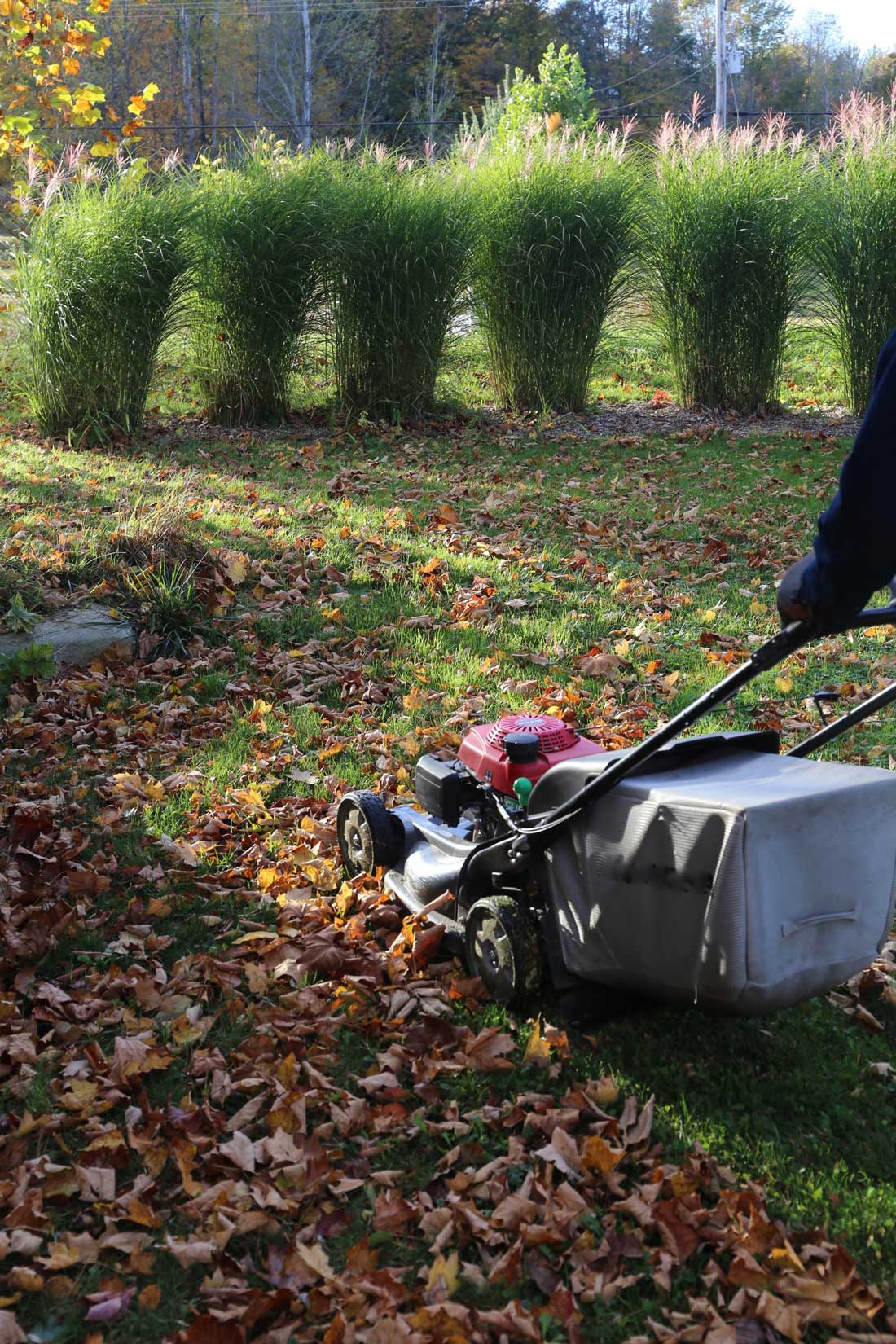
How to Shred Leaves
Leaf shredders work great, but all you really need is a mulching mower with a bag attachment. Simply mow over the leaves with the bagger attached and empty them out when it gets full. If you prefer more finely shredded leaves, double-chop them by mowing once without the bagger and a second time with the attachment. As you work, you can empty the leaves into a cart or onto a large tarp that can be dragged to another area.
How to Store and Use Shredded Leaves
You can store your shredded leaves in large plastic trash bags or simply corral them inside a fence or other structure. Easier yet, is to just make a big pile and cover it with a tarp. Once you have a ready supply of shredded leaves, you’ll find dozens of ways to use them. Here are a few suggestions:
• Insulate tender plants from extreme cold. Cover garlic, roses and other tender perennials with a 4 to 6″ layer of shredded leaves. Wait to apply mulch until after the ground begins to freeze. This gives plants time to enter their natural winter dormancy.
• Enrich the soil. Mix shredded leaves into the soil to enrich new or renovated garden beds. Doing this in the fall allows time for the leaves to start decaying. See note about nitrogen below.
• Rev-up your compost pile. Leaves are rich in carbon. In a compost pile, they help to balance the carbon-nitrogen ratio (kitchen scraps are high in nitrogen) and absorb excess moisture.
• Suppress weeds. Save plenty of shredded leaves for spring mulching. After sitting for a few months, you’ll have a premium, weed inhibiting mulch for covering the soil around perennials, shade plants, vegetables and fruits.
• Make leaf mold. Over time, shredded leaves naturally break down into a soft, finely-textured substance called leaf mold. This concentrated material is high in calcium and magnesium and retains three to five times its weight in water. Leaf mold can be added to potting soil, used to top-dress potted plants, or be used as a super-premium mulch.
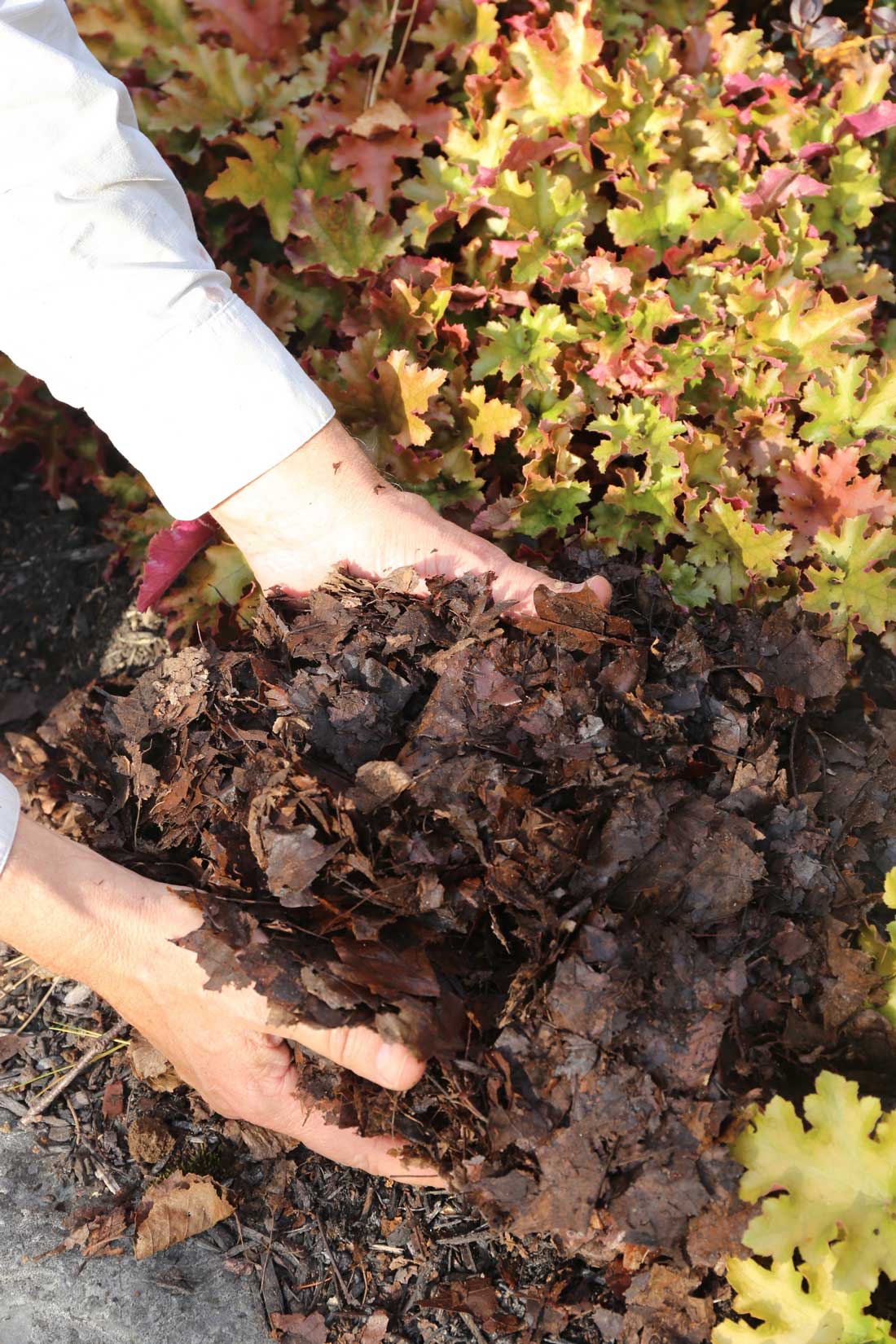
TIP: Why You Should Add Nitrogen to Shredded Leaves
Converting shredded leaves into crumbly, nutrient-rich soil is the job of bacteria and other beneficial organisms. To do their work, these microbes require nitrogen as an energy source. If there’s no easily available nitrogen, the microbes will draw it from the surrounding soil. This deprives neighboring plants of the nitrogen they need for healthy growth.
To avoid this problem, simply mix some nitrogen fertilizer into the shredded leaves before you use them — or sprinkle some on top once they are in place. You can use a nitrogen-rich all-purpose 10-5-5 granular fertilizer, or an organic source of nitrogen such as alfalfa meal, cottonseed meal, fish meal, composted chicken manure, bat guano or fish emulsion. When applying nitrogen, always follow recommended application rates. More is not always better!
Another way to incorporate nitrogen is to collect grass clippings and mix them into the shredded leaves.
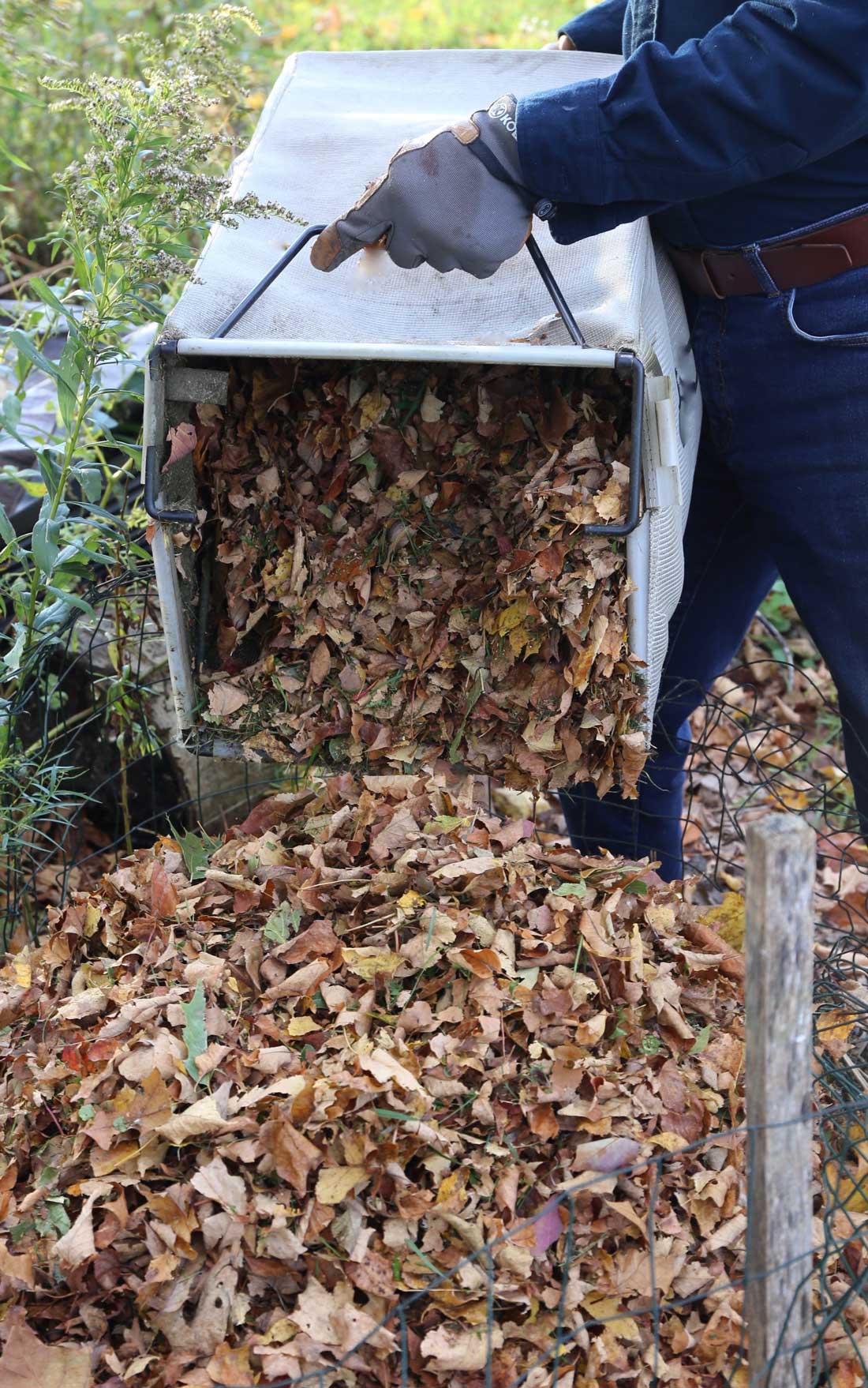
A Free Resource That’s Too Valuable to Waste
Once you start finding ways to put shredded leaves to work in your yard and garden, you may wish you had more of them! Fortunately, most people are only too happy to give them away. You may even find a local landscaper who is willing to drop off shredded leaves that they collect from clients.
If you get leaves that are whole rather than shredded, you have a couple options. Run them through your leaf shredder, if you have one. Dump them in a pile, add some nitrogen and let them decompose for a year. If the leaves are pre-bagged, just add water and a little nitrogen to each bag and stow them away for 6-12 months. By spring, the leaves will be partially decomposed and ready to use.
You may also be interested in reading: Fall Checklist for Flower Gardens.

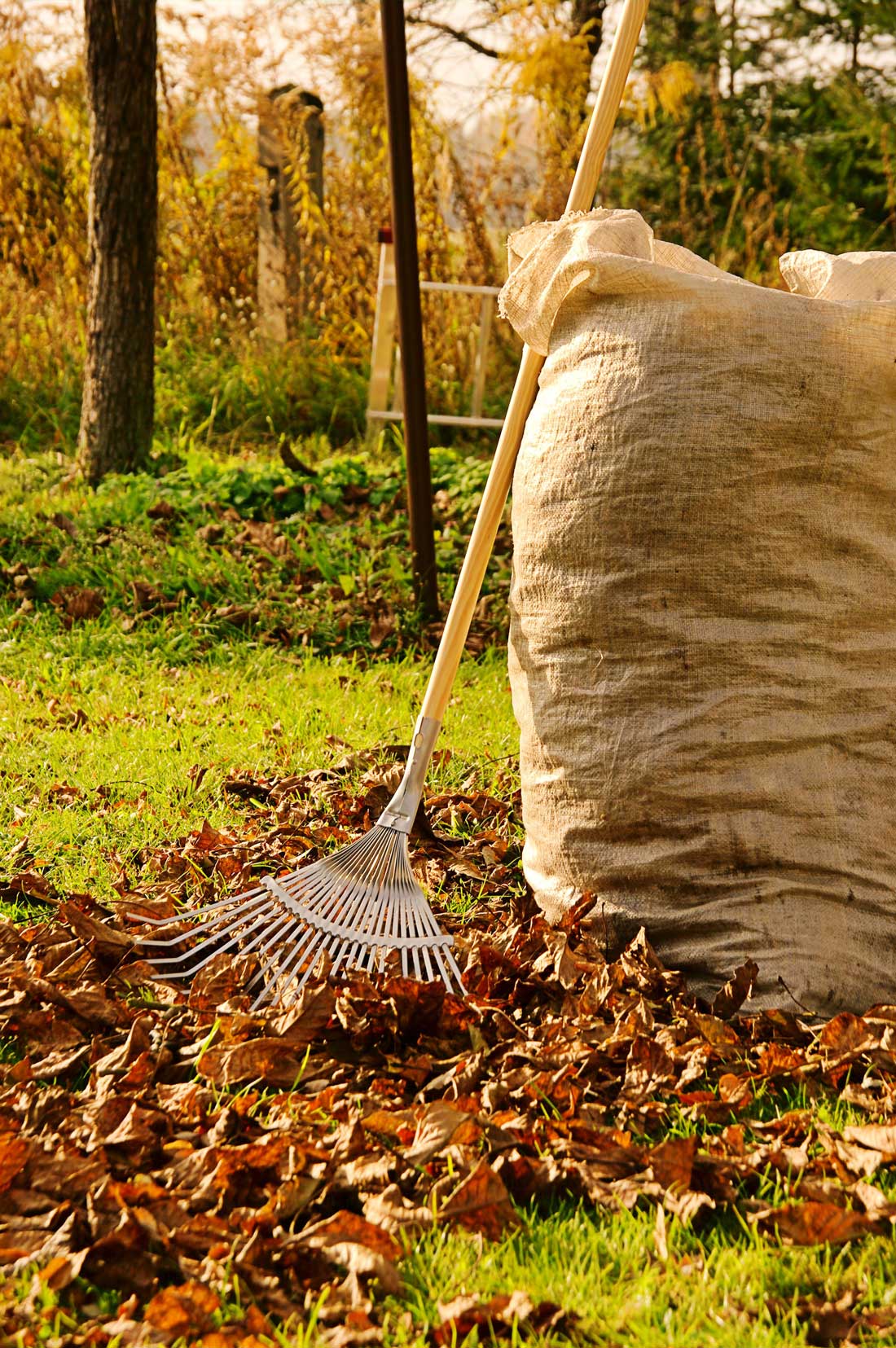
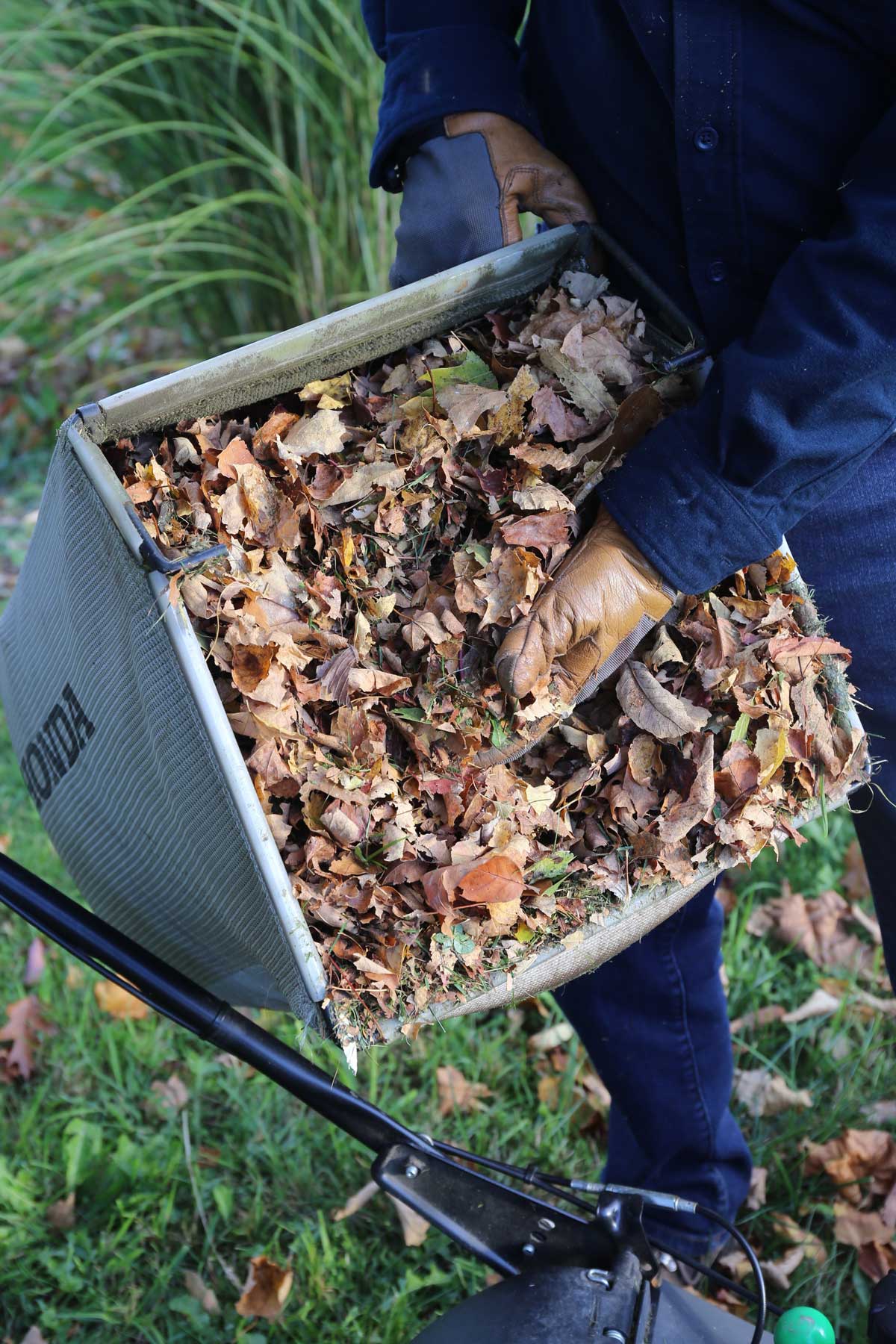

Great information on saving your fall leaves. I was just about to toss out the can full of leaves collected a few weeks ago. Now I am sorry the bulk of them got tossed.
Kathleen, do you have any idea why my Alliums (Sensation and Gigantum) did not bloom? I have read other stories like mine on the internet with no answer. They were planted in Fall of 2016 and did not bloom in 2017. I dug up the area where I planted the Gigantum and the bulb is still there and in good shape.??? I did not even get any foliage from it. Same thing with the Sensation – no foliage.
Hi Leesa, Honestly, I have never heard of that. Alliums are so easy and reliable. At the very least those bulbs should have put out leaves and no flowers. All I can think to suggest is planting a new batch of bulbs — maybe in a different place — and see if you have better luck. Unfortunately, it may be impossible to find bulbs this late in the season. If you purchased the bulbs from Longfield Gardens, please contact customer service and we will see what we can do.